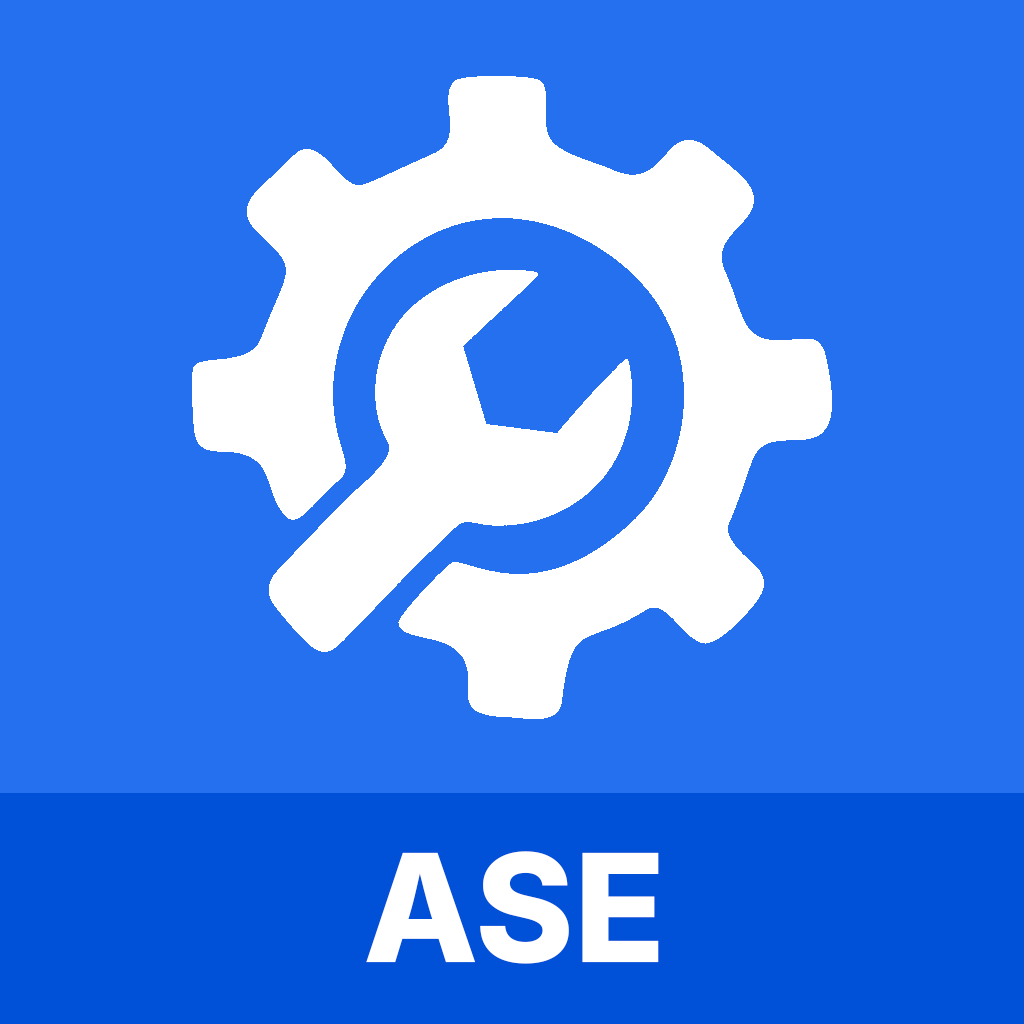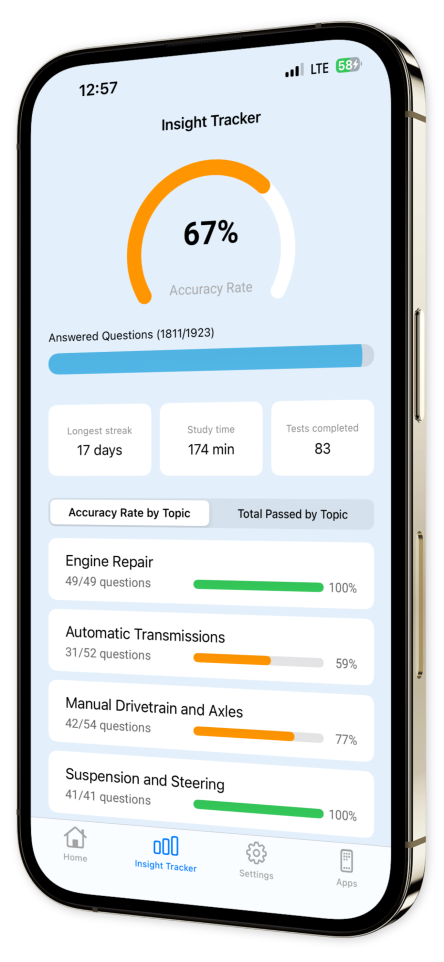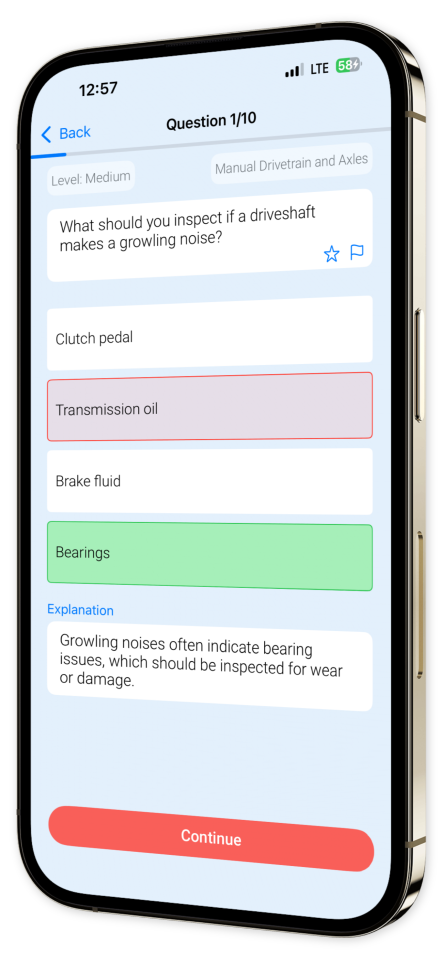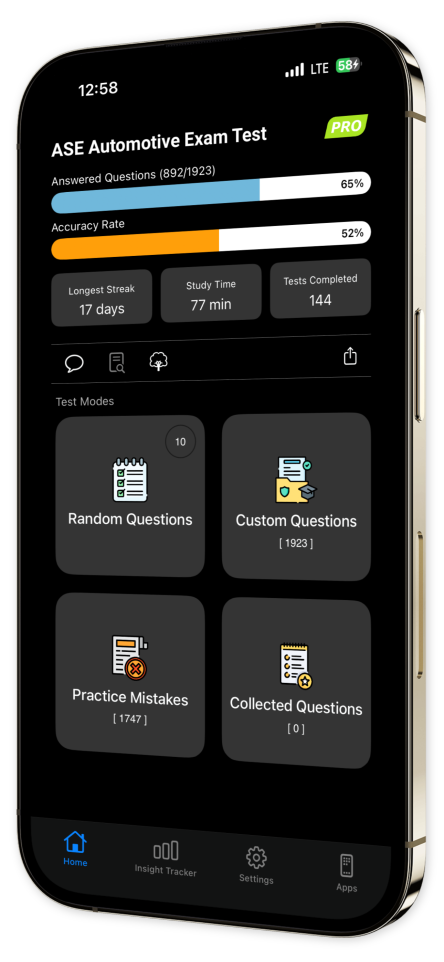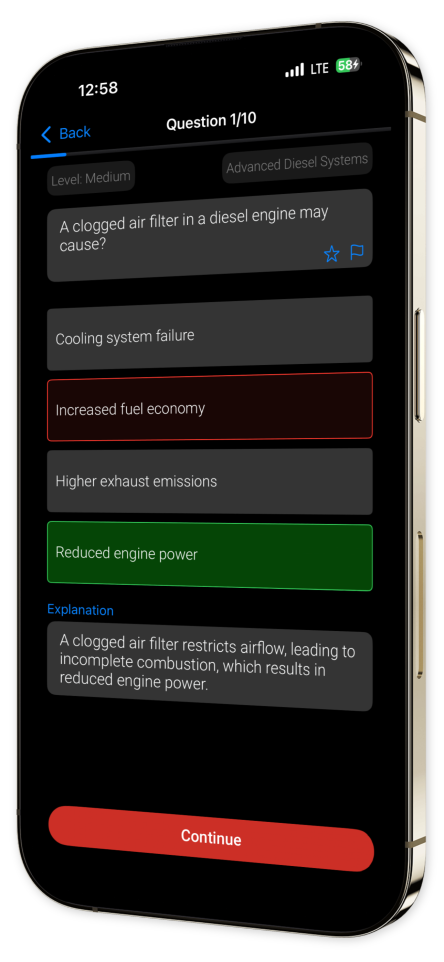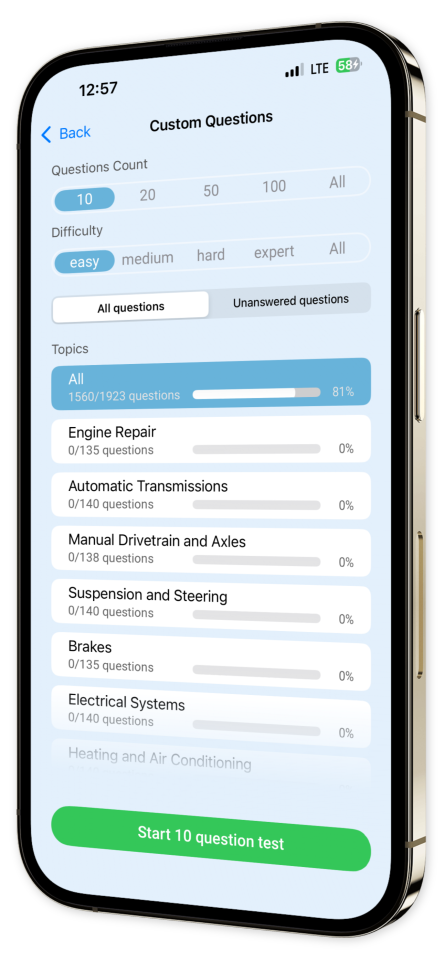
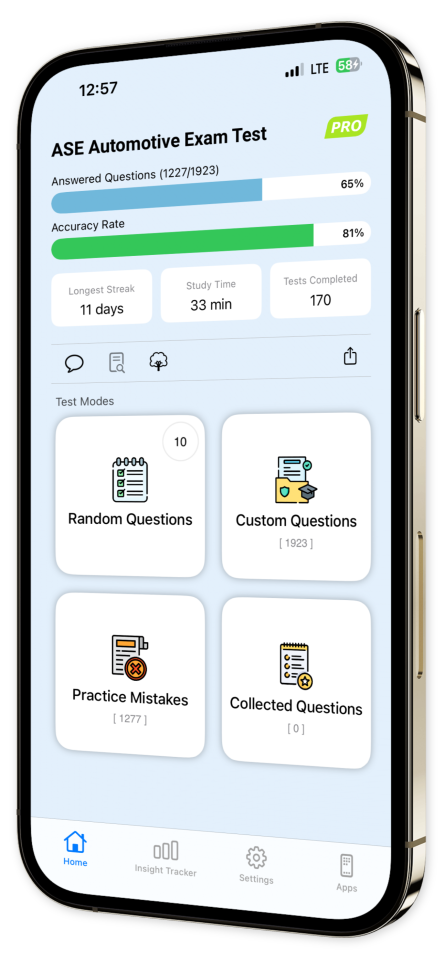
ASE Automotive Exam Test iOS and Android App
Rev up your automotive certification journey with ASE Automotive Exam Test!
Designed for aspiring mechanics and seasoned professionals alike, our app plunges you into a realistic test environment.
Delve into an expansive collection of practice questions tailored to cover all crucial areas of the ASE certification seamlessly.
Each query is accompanied by an exhaustive explanation, enhancing your understanding and expertise.
Key Features:
Extensive Question Bank: Tackle a comprehensive set of questions that span fundamental to advanced automotive concepts.
In-Depth Explanations: Benefit from detailed rationales provided for each question, ensuring that each learning moment is enriching and illuminating.
Custom Test Creation: Craft your quizzes by selecting particular topics and types of questions, honing in where your focus is needed most.
Progress Tracking: Monitor your progress and witness your improvements over time with our insightful progress tracking modules.
Offline Access: Engage with our content anywhere, anytime, with the convenience of offline accessibility, perfect for on-the-go learning.
User-Friendly Interface: Navigate through a streamlined and intuitive design, keeping your focus locked on mastering the content.
Transform how you prepare for your ASE certification with ASE Automotive Exam Test.
Fuel your career by downloading the app today and drive your preparation to the next level!
Embrace a smarter, more informed approach to exam preparation and set yourself on the path to success!
Content Overview
Explore a variety of topics covered in the app.
Example questions
Let's look at some sample questions
What is the purpose of honing in engine block repair?
To polish the pistonsTo remove carbon depositsTo create a crosshatch pattern in cylinder wallsTo clean the oil pan
Honing is done to create a crosshatch pattern in cylinder walls, which helps retain oil for lubrication and improves the sealing of the piston rings.
What component prevents coolant from leaking into engine cylinders?
Valve cover gasketOil pan gasketHead gasketIntake manifold gasket
The head gasket seals the space between the engine block and cylinder head, preventing coolant and oil leaks into the cylinders.
What is the minimum taper limit for a cylinder bore, usually leading to a bore and hone operation?
0.001 inches0.003 inches0.005 inches0.010 inches
Most OEM specifications and repair manuals state a taper limit of 0.005 inches necessitates bore and hone for optimal performance.
An engine rebuild kit specifies cylinder bore piston clearance as 0.0018 to 0.0022 inches. What could happen if clearance is 0.003 inches?
Increased resiliencePiston slapOil consumption decreasesNo effect
A clearance of 0.003 inches is excessive, leading to piston slap due to improper piston stability and fit.
For a cast iron engine block, at what temperature does thermal expansion typically lead to stress cracks?
200°F300°F450°F550°F
Thermal stress cracks in cast iron blocks tend to develop around 450°F. This temperature surpasses the material's capacity to dissipate heat without cracking.
What component in the valve train opens and closes the engine's valves?
CamshaftPistonCrankshaftFlywheel
The camshaft is directly responsible for opening and closing the engine's valves in synchronization with the pistons.
Why is aligning timing marks crucial during timing belt installation?
Prevents engine overheatingEnsures correct valve timingIncreases oil flowReduces engine noise
Aligning timing marks ensures that the camshaft and crankshaft valves open and close at the appropriate times, maintaining correct engine timing.
How does a clogged radiator affect engine performance?
Improves fuel economyReduces engine powerIncreases oil consumptionImproves acceleration
A clogged radiator hinders coolant flow and causes overheating, thereby reducing engine power and potentially causing damage.
Determine oil viscosity change if coolant leaks into the oil, mentioning key property affected.
Viscosity increases significantlyViscosity stabilizes with better performanceViscosity decreases significantlyNo change in viscosity
Coolant mixing with oil thins the oil, drastically decreasing its viscosity, leading to inadequate lubrication and component wear.
Calculate the heat transfer reduction if coolant flow decreases by 20% in a radiator system. Assume systems linearity.
No change in heat transferEqual to 20% reduction40% reductionIncreases by 20% due to efficiency
Heat transfer is directly proportional to flow rate. A 20% flow reduction leads to nearly 20% reduction in heat transfer assuming all else constant.
